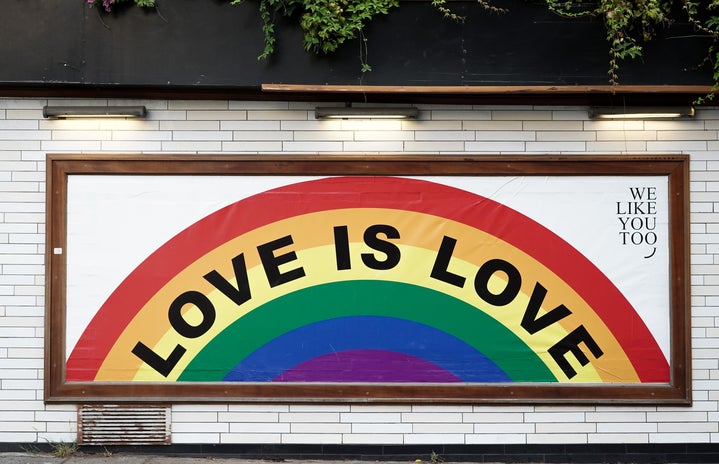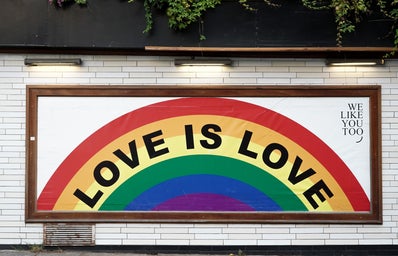Media has a huge impact on us. Especially when we talk about love, cinema takes up a major area. Whether it’s a fairytale, romcom or a passionate movie we want our relationship to be like. But what if our love isn’t even represented? While all of our friends have something to gush over, quote their favourite love stories, bond with their partners over it; it can be quite a lonely feeling for some of us.
Now, how many times can we categorise Indian queer characters depicted on-screen into either of these: the tragedy, the gay best friend trope or the story solely revolving around the struggles of coming out? (I admit that coming out is the foremost and the hardest so appreciate that Indian cinema began to at least acknowledge the queers through the portrayal of that but… what’s beyond it?)
To elaborate on these limiting tropes:
- The Tragedy Narrative: Many queer characters in Indian cinema have been depicted as tragic figures, often facing societal rejection, discrimination, and even violence. This perpetuates the notion that queer lives are inherently sad and without hope.
- The Gay Best Friend Trope: Queer characters are often reduced to the role of the flamboyant, sassy, and ultimately disposable sidekick, serving to support the heteronormative protagonists and their storylines.
- The Struggle of Coming Out: While the portrayal of the coming-out process is important, it should not be the sole focus of queer narratives. There is a need for stories that explore the nuances and diversity of queer experiences beyond this single aspect.
So, from the pioneer queer (baiting) parody (yes, I’m looking at you, Dostana) to the ‘We accept the LGBTQ+ as long as they’re tied to a heteronormative view such as a lavender marriage’ like Badhaai Do, there is an interplay of: is it the audience’s fault that the makers won’t produce something that will go unrecognised or the makers’ fault that they should make it anyway because it is their contribution to shaping the society? (This question’s context hence extends onto other marginalised, authentic representations too)
In my opinion, the makers should still make it because, of course, as aforementioned, it is their contribution, and also because if it is well made and people don’t respect it right away, then perhaps it would be something ahead of its time which will be honoured sooner or later. Their contribution can go a long way. For example: one of the biggest directors in Bollywood aka Karan Johar is queer but he has made no effort to represent his own community.
For starters, seeing one’s own experiences and identities reflected on the big screen can be a powerful form of validation and empowerment for LGBTQ+ individuals, who may have long felt invisible. Positive and diverse queer representation in Indian cinema can help normalise LGBTQ+ identities, increase visibility, and foster greater acceptance and understanding within society.
Section 377 was decriminalized on 6th September 2018, but the plea for same sex marriage was declined by the Supreme Court recently. In a traditional country, like India, the institution of marriage is more acceptable than romantic love, so, even though love is love, it is the right to marriage that has the significance of sanctity. Therefore, if the mass media spreads and portrays queer love, then the Indian population would also understand and accept it over time, who then would also accept marriage and support legalising it, thus providing legitimacy to all kinds of love in India.
And, well, here are some ways to do this:
- Empowering Queer Artists: Providing opportunities and platforms for LGBTQ+ individuals to direct, write, and produce their own stories can lead to more authentic and impactful queer representation in Indian cinema.
- Cross-Sectoral Collaboration: Fostering partnerships between the film industry, LGBTQ+ advocacy groups, and other stakeholders can help create a more inclusive and supportive ecosystem for queer representation in this cinema.
- Educating the Audience: Efforts to educate and sensitise the general public about LGBTQ+ identities and experiences can help create a more receptive and appreciative audience for queer-centric films.
- Persistence and Resilience: Continued advocacy, storytelling, and a commitment to authentic representation, even in the face of challenges and resistance, will be crucial for driving lasting change in the portrayal of LGBTQ+ characters and relationships in Indian cinema.
In conclusion, firstly we have to acknowledge the past by recognizing the limitations and problematic tropes that have historically defined queer representation in Indian cinema and use this understanding to chart a more inclusive and empowering path forward. Next, we should embrace the present and celebrate the strides made in recent years, while also acknowledging the ongoing need for more diverse, nuanced, and authentic portrayals of LGBTQ+ characters and relationships. And finally, imagine a future and hold onto that picture where Indian cinema embraces the full spectrum of queer identities and experiences, and where LGBTQ+ individuals can see themselves reflected on the big screen with dignity, complexity, and joy.
For more interesting pieces, visit Her Campus at MUJ!


